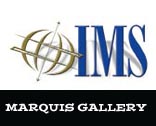
Adobe PDF File eBook Ordered From This Website Will Be Delivered Within 24-48 Hours from your confirmed order as we manually process each order. Thank you for your understanding.
AVAILABLE FOR SALE


Architectural Flourishes: Lyon, France
Detailing Guide to Lyon Architecture
This pictorial guide illustrates the features, ornamentation and detailing that capture Lyon’s medieval and mid to late 19th century architectural legacy. Many of these images may be traced to the ambitious direction of Claude-Marius Vaisse appointed the Prefect of the Rhone during the reign of Napoleon III and the Second Republic.
During the same epoch of famed Prefect of the Seine Department, Baron Haussmann, Vaisse initiated his own programs of modernization and urban renewal. His office targeted the eradication of unsightly slums along with cramped and constricted commercial districts. Under his direction, he established a vast network of canals and aqueducts. His initial salvo towards shaping a new civic environment came with the completion of the Rue Imperiale. Lyon would adopt urban models attributed to Paris, yet drew upon numerous elements from its own past to differentiate its identity. Inherent space constraints would limit the scale of ambitions, pushing development towards the peripheries.
Vaisse’s major accomplishments included restoring the City Hall following a destructive fire, the creation of the Rue Imperiale (Rue de la Republique) and Rue de l’Imperatrice (Edouard Herriot) and the La Croix-Rousse Hospital. Other developments included the Lyon-Perrache train station, Stock Market building, Parc de la Tete d’Or and the creation of the Compagnie Lyonnaise des Omnibus. For his efforts, he was appointed a Senator and awarded the Grand Cross of the Legion of Honor. He died in Lyon at the age of 65 on August 29, 1864.
The photographic imagery of this edition focuses on the architectural ornamentation and exterior moldings on exterior display. The text details the accompanying history of Second Republic architecture and its two design successors. The Art Nouveau movement would represent the Belle Époque period when introduced during 1890 spreading throughout Europe.
Art Deco architecture coincided with the fading of Art Nouveau’s influence beginning in 1910. Its was elevated into prominence at the International Exposition of Modern Decorative and Industrial Arts exhibition held in Paris during 1925. It remained a dominant style until 1939 and the global aggression inflicted by World War II.
Lyon’s history originated when the Roman Senate ordered the creation of a settlement in 43 BC for refugees of war in the conflict with the Allobroges. The relocated population had been expelled from nearby Vienne. The group initially encamped at the confluence of the Soane and Rhone rivers. The foundation of their initial settlement was constructed upon the highlands of Fourviere Hill. The city became known as Lugdunum translated into the Gaullist language as Desired Mountain.
Lugdunum’s strategic location became a desirable starting point for essential roads in the region. The settlement evolved into the capital of the province. Two future Roman emperors, Claudius and Caracalla were born in the city, the sons of government officials. Preserved remains of the ancient Theatre of Fourviere and the Amphitheatre of the Three Gauls testify to the formerly advanced development of the region.
The storied Traboules are clandestine passageways wind their route through buildings, courtyards and intricate staircases. Each passage is unique and often features pastel colors, confounding curves, arches, vaulted ceilings and spiral staircases. Traboules radiate mystery and intrigue within the shadows. Many boast a Renaissance era heritage with some dating back to reportedly the 4th century.

Marquis Publishing is a publisher of paperback and electronic books.
MARQUIS PUBLISHING
California, USA
1 (707) 712-8062
marques@artsinamerica.com




